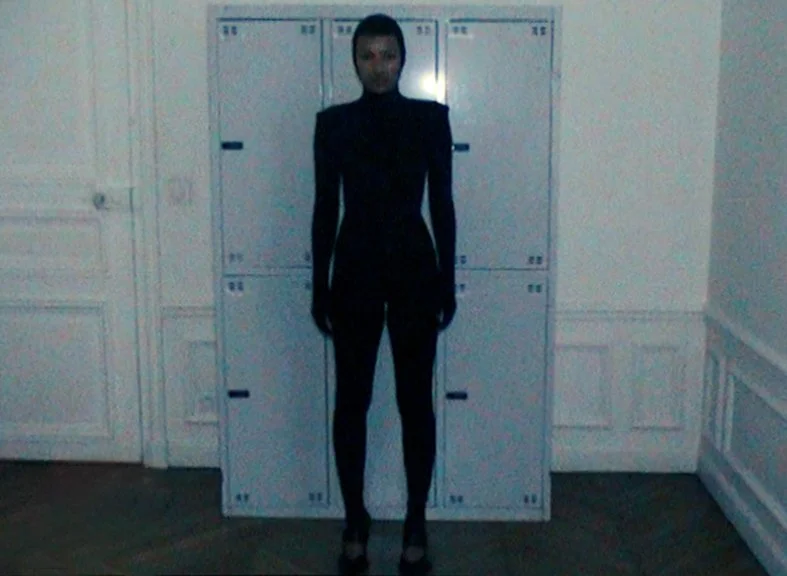PRODUCTS BY BETSY JOHNSON
PRODUCTS explores the intersection of commodity culture, fashion commerce, and class – founder Betsy Johnson is claiming a space between the fashion and art worlds despite litigation with nepo-brands (KHY 😡) and the rigid exclusivity that constructs the global fashion calendar. PRODUCTS exists on an alternate plane that speaks for itself and the people who resonate with being both inside and beyond the boundaries of an industry that commodifies everything.
Interview by MERDE contributor Vasco Oliveira
VASCO: What is the inspiration behind the name PRODUCTS?
BETSY: We should actually say we’re going to this interview in the bathroom of my apartment, it’s actually quite funny.
Anyways, I was always referring to different items as products: rather than clothes, shoes, furniture, just referring to everything as products. Everything really is this commercial entity, it’s not this ‘marketed idea’. There are many layers to why it’s called ‘Products’, but it was just staring me in the face. I don’t like things being attached to my name, and I'm not a designer by trade, I don’t want to be the name on the door. It just made sense.
VASCO: How would you describe the PRODUCTS aesthetic?
BETSY: This word aesthetic is funny because a lot of people describe what I do and the different aesthetics involved, but I don’t know what it means. I know it what it means by nature, but I fight really hard to understand because I’m so entrenched in what I do as a day-to-day practice, like brushing my teeth - whether it’s red-lining a budget, or working on a deck, or calls with casting directors or the atelier - I’m so present in what I’m doing in the moment, it’s hard to explain. The clothes from this collection are based on the royal family silhouette. A lot of workwear, classic fabrics that are from working class environments, having this conversation about class. I don’t know how to describe the aesthetic - it’s very straightforward. I very rarely go for something that’s over-flowered, or over-explained. Everything usually feels like the most obvious choice. For example, the editorial shoot is back home, shot by someone who shoots very much what is there, capturing what the image is, not trying to capture something not there, something matter-of-fact, not fantasy. Maybe that’s the way of describing the Products aesthetic - it’s matter-of-fact. It is what it is, there is no over-marketing or over-emphasis. It’s Products.
VASCO: Who is your customer and what world do you see them living in?
BETSY: When I was working on a project before Products, we always said the customer was 6-60 years-old, and I try to have that rule in my head moving forward with everything, because I think everything should be timeless in some respect. I don’t like the idea of trends, I think we’re really unraveling as humans if we’re only tuning into this trend-based situation. If I’m trying to do something sustainable, and also from the image side, that tells a story, is a time capsule and holds its own in the future, then it has to be relatable to everyone and no one at the same time. The customer for Products on a conceptual level is everyone. I hope there are both people who relate to the storytelling and the silhouettes, and the people who don’t relate will fetishize it and fantasize about it and love it as an aesthetic, loving it for completely different reasons.
I’m quite selfish in my work, I feel. A couple of years ago, before I got paid to do creative direction or styling, I was doing it for three years, selling clothes on Depop. I never made images that I thought people wanted to see, or what I thought potential clients wanted to see, which was really stupid. After a few years, I thought, ‘what am I doing, I’m making images that no one wants to recreate’. Luckily things changed. I still value what’s going on in my head and creating images that show what I resonate with, but I can create more relatable content. I knew I was going to think about the commercial receiving end of this project, for the first time I was focused on the fact someone needs to buy it, always thinking about the customer and where we’re going from Point A to Point B. With my own personal work, I’m very emotionally connected to it, so it was very strange to come to terms with detaching, which is why I'm saying it like it is with Products.
VASCO: What toxic trait of the Fashion Industry do you hope to overcome with PRODUCTS?
BETSY: There are so many problems with the fashion and art industry; let’s just call it the commodity industry. That goes for commodities such as musicians in the entertainment industry, and the people that surround those commodities, infrastructurally rigged to be there. Since the industrial revolution of who runs, owns, and controls the ‘industry’ globally - the word ‘industry’ being the commodity industry, including fashion and art. I think now, we’re at a bit of a crossover where working people could get into both fashion and art spaces. I think in the past 10 years there’s been progression where we’re starting to unravel again. Everyone at the MET Gala was a ‘Nepo-baby’ and all the creative directors were white dudes. This project is about plugging into existing infrastructures and hopefully moving forward, working with bigger companies who I have more power with, who are in fact part of this infrastructurally flawed space, and thus pushing them to do things differently internally, by doing things differently externally as a part of a Products project. The storytelling around that project is also relevant, contextualizing the world around it, wherever we are in that moment. I think the biggest problem in these industries is the people in control, with the say-so and the voice, are, I’d say about 80% from more privileged backgrounds, which may mean they don’t have a lot of care about changing the world around them. The people that care about shit, and changing the world around them, people who care about sustainability or marginalized voices who have a lot to say, don’t have the space to have a voice. We need to get more people into those spaces, even if it’s in 50 years, which is a massive goal of mine. Additionally, I don’t want to adhere to the fashion calendar, or seasonal trends. We’re literally all going to die if we don’t start doing things differently.









